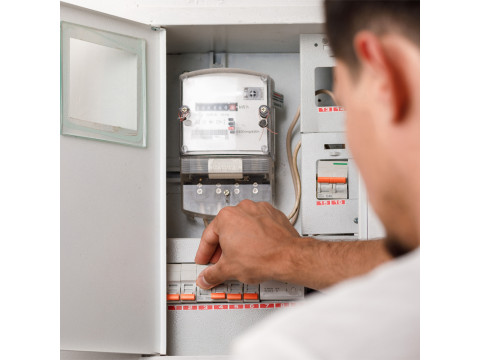Why Your Circuit Breaker Trips: Understanding Common Causes and Solutions
Introduction to Circuit Breaker Trips
Circuit breakers are essential safety devices in your home's electrical system, designed to protect against electrical hazards such as overloads and short circuits. However, encountering frequent trips can be frustrating and may indicate underlying issues that need attention. Understanding why your circuit breaker trips and how to address these problems is crucial for maintaining a safe and efficient electrical environment.
Common Reasons Why Circuit Breakers Trip
1. Overloaded Circuit Breakers
Definition: An overloaded circuit occurs when the electrical demand exceeds the breaker's capacity, causing it to trip to prevent overheating and potential fire hazards.
Causes:
- Excessive Appliances: Plugging in too many high-wattage appliances on a single circuit.
- High-Power Devices: Using multiple high-power devices simultaneously, such as space heaters, air conditioners, or kitchen appliances.
- Circuit Design: Inadequate circuit design that doesn't account for the total load requirements of a room or area.
Solution:
- Redistribute Loads: Spread out appliances across multiple circuits to balance the electrical demand.
- Upgrade Circuit Capacity: Consider upgrading the breaker and wiring if the existing setup consistently experiences overloads.
- Use Energy-Efficient Appliances: Opt for devices with lower power consumption to reduce the overall load.
2. Short Circuits
Definition: A short circuit occurs when a hot (live) wire comes into direct contact with a neutral or ground wire, causing a sudden surge in electrical current.
Causes:
- Damaged Wiring: Frayed or damaged insulation on wires can lead to unintended connections.
- Faulty Outlets or Fixtures: Defective electrical outlets, switches, or fixtures can create short circuits.
- Appliance Malfunctions: Internal faults within appliances can cause short circuits when they malfunction.
Solution:
- Inspect Wiring: Regularly check for signs of wear, damage, or overheating in your electrical wiring.
- Replace Faulty Components: Replace defective outlets, switches, or fixtures to eliminate potential short circuit sources.
- Professional Repair: If short circuits persist, consult a licensed electrician to diagnose and fix the issue.
3. Ground Faults
Definition: A ground fault happens when electrical current leaks from the intended circuit path to the ground, often through a person or an unintended conductive path.
Causes:
- Damaged Appliances: Appliances with damaged insulation can cause current leakage.
- Moisture Exposure: Water ingress in electrical devices increases the risk of ground faults.
- Faulty Wiring: Improper or degraded wiring can lead to unintended connections with the ground.
Solution:
- Use Ground Fault Circuit Interrupters (GFCIs): Install GFCI outlets in areas prone to moisture, such as bathrooms and kitchens.
- Maintain Appliances: Regularly inspect and maintain appliances to prevent insulation damage and leaks.
- Professional Assessment: Engage an electrician to evaluate and repair wiring issues contributing to ground faults.
4. Faulty Circuit Breakers
Definition: Sometimes, the circuit breaker itself may malfunction, causing it to trip unexpectedly even when there is no electrical fault.
Causes:
- Aging Breakers: Over time, breakers can wear out and lose their effectiveness.
- Manufacturing Defects: Defects in the breaker's components can lead to unreliable operation.
- Frequent Tripping: Repeated trips can degrade a breaker's performance, making it more susceptible to failure.
Solution:
- Replace the Breaker: If a breaker is faulty, replace it with a new one of the same rating and type.
- Upgrade When Necessary: Consider upgrading to a higher-quality breaker if you experience frequent trips without clear causes.
- Regular Maintenance: Periodically test and maintain your breakers to ensure they function correctly.
Troubleshooting Steps for Tripping Circuit Breakers
Step 1: Identify the Tripped Breaker
- Locate the Breaker Panel: Open your home's main electrical panel to find the tripped breaker, which is usually in the "off" position or partially between "on" and "off."
- Reset the Breaker: Flip the breaker fully to the "off" position and then back to "on."
Step 2: Determine the Cause
- Isolate the Circuit: Turn off or unplug all appliances and devices on the affected circuit.
- Reset the Breaker Again: If the breaker stays on, gradually reconnect appliances to identify the one causing the overload.
- Inspect for Short Circuits: Look for signs of damaged wiring, faulty outlets, or malfunctioning appliances.
Step 3: Address the Issue
- Reduce Load: Move high-power devices to different circuits to prevent overloads.
- Repair or Replace Faulty Components: Fix damaged wiring or replace defective outlets and fixtures.
- Consult a Professional: If you're unable to identify the cause or if the breaker continues to trip, seek assistance from a licensed electrician.
Preventive Measures to Avoid Tripping Circuit Breakers
- Avoid Overloading Circuits: Distribute electrical loads evenly across multiple circuits to prevent any single breaker from becoming overwhelmed.
- Use Appropriate Breakers: Ensure that each circuit has a breaker rated for its specific load requirements.
- Install GFCIs and AFCIs: Ground Fault Circuit Interrupters (GFCIs) and Arc Fault Circuit Interrupters (AFCIs) enhance electrical safety by preventing ground faults and arc faults, respectively.
- Regular Inspections: Schedule periodic electrical inspections to identify and rectify potential issues before they lead to breaker trips.
- Educate Household Members: Inform everyone in the household about the importance of not overloading outlets and using appliances safely.
Conclusion
Frequent tripping of circuit breakers is a sign that your electrical system may be experiencing issues that require attention. By understanding the common causes—such as overloaded circuits, short circuits, ground faults, and faulty breakers—you can take proactive steps to identify and resolve these problems. Implementing preventive measures and maintaining your electrical system will not only enhance safety but also ensure the efficient operation of your household appliances and devices.
At safsale.com, we offer a wide range of high-quality automatic circuit breakers and electrical protection devices from leading manufacturers like Siemens, Schneider Electric, ABB, Eaton, and Hager. Equip your home with reliable protection solutions to maintain a safe and efficient electrical environment for you and your family.
For more information and to explore our selection of electrical protection devices, visit safsale.com

